
About
Gymnastics is a captivating and awe-inspiring sport that combines strength, flexibility, grace, and precision. With its roots tracing back to ancient Greece, where it was an integral part of physical education and competitions, gymnastics has evolved into a highly technical and artistic discipline. It showcases the incredible abilities of athletes as they perform jaw-dropping feats of athleticism, pushing the boundaries of what the human body can achieve.
Gymnastics is divided into two main disciplines, artistic gymnastics and rhythmic gymnastics. Artistic gymnastics features both male and female athletes competing on apparatus such as the vault, uneven bars, balance beam, and floor exercise. Rhythmic gymnastics, exclusively performed by female athletes, combines elements of ballet, dance, and apparatus manipulation, such as the hoop, ball, clubs, and ribbon.
Gymnastics rules are set and maintained by the regulating authority named Fédération Internationale de Gymnastique (FIG) they also govern other aspects of the sport. In this sport, athletes perform their routine on a set of apparatus and complete the routine with an acrobat jump. The duration of each routine is about 60 – 90 seconds and depends upon the apparatus.
Gymnastics demands an exceptional level of strength, flexibility, and precision from its athletes. Gymnasts develop strong core muscles, upper body strength, and explosive power through countless hours of training. Flexibility is crucial, enabling them to execute intricate movements and maintain flawless body positions. The precision required in every routine is achieved through relentless practice, fine-tuning each element to perfection.
Men and women both participate in gymnastics under their respective categories. There are different apparatus for men and women and different gymnastics rules for each apparatus.
Apparatus for Men: Vault, Floor Exercise, Pommel horse, Rings, Parallel Bars, Horizontal bar
Apparatus for Women: Vault, Floor Exercise, Uneven bars, Beam balance
The Routine of both men and women gymnasts on an apparatus is judged upon the degree of difficulty, the skill of presentation, landing style, usage of apparatus and overall presentation. Points are deducted for any faults by the athletes.
There is an age limitation for senior gymnasts. Women must be of at least 16 years of age while men must be at least 18 years of age.
Artistic Gymnastics Olympic 2020 logo : ![]()
History
Gymnastics was introduced at the very first Olympic Games in 1896 in Athens and has been present at every edition of the Games. Women gymnastics was introduced in 1928 as a team event. All-round and apparatus final for women was gradually introduced in the 1952 Olympics at Helsinki.
Objective
Artistic Gymnastics competition is generally divided into three parts for both men and women gymnasts.
Competition starts with the qualification rounds where athletes compete as part of their team. The scores of the team events are used to classify the advancement of teams towards the team events. This round also is used to determine the gymnasts that advance to the all-round event and final event.
Gymnastics is a sport that demands tremendous dedication and sacrifices from its athletes. Gymnasts spend countless hours in the gym, training their bodies and minds to overcome challenges and master complex skills. They follow strict training regimens, working on conditioning, technique, and routine execution. The road to success in gymnastics is paved with perseverance, resilience, and an unwavering commitment to excellence.
Team Event: Gymnasts becomes a part of their national squad and compete in their respective apparatus. Men compete in six and women compete in four apparatus. The scores of each top three gymnasts for each apparatus is added and counted.
After a team completes routine with all the apparatus the points achieved by a team is calculated. The team with the highest points is awarded medals.
All-round competition: Two top gymnasts from team events of each team participate in the all-round event. Here the gymnasts perform individually across all the six apparatus for men and four apparatus for women. The scores of all the apparatus are added to decide the recipients of the individual medals.
Apparatus final: Top eight gymnasts from each apparatus complete for the apparatus final.
Scoring: A 10.0 format scoring pattern is used. Points are deducted for any error in the routine performed in an apparatus.
Apparatus and Rules
Vault
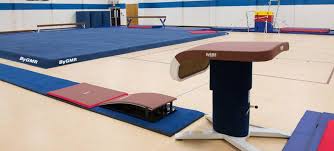
- This apparatus applies to both men and women. Gymnast sprints long a straight lane about 25 m long and jumps into a springboard. With the energy from the springboard, the gymnast lands on the vault, hand first.
- Gymnast completes the routine by a perfect landing. The complexity of the jump, the approach to the vault and the landing carries different points.
- Points are awarded to a gymnast based on the difficulty of the jump and perfection of the landing.
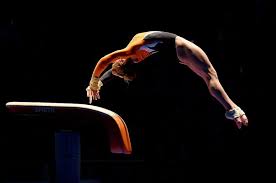
Floor
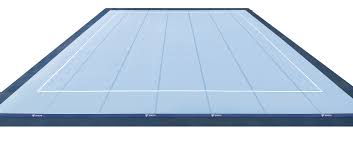
- This apparatus applies to both men and women. A floor typically measures about 12m by 12m square and carpeted floor.
- The floor is called a spring floor as it contains hard foam supported by plywood and spring that provides lift to the gymnasts.
- Each gymnast is required to touch all the four corners of the floor during their routine. The routine should include both acrobatic and non-acrobatic skills like hand press.
- Men routines are of 70-sec duration. The complexity of landing and the acrobatic and non-acrobatic skills are taken into consideration.
- Women routines are choreographed and are of 90-sec duration. They complete their routine along with music and display flexibility of their body and dance to the tune along with acrobatic skills.
- The complexity of landing and the acrobatic, flexibility and dance skills following the music is taken into consideration.
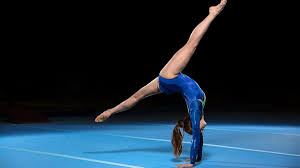
Pommel Horse

- This apparatus applies to men only. The routine of a Pommel Horse involves around 120 sec where gymnasts perform exercises of single leg and double legs. They also swing clockwise and anti-clockwise and also display handstand.
- Gymnasts performs different other variations to make their routine difficult. Gymnasts are not allowed to pause during their routine which generally concludes with a jump.
- Points are awarded based on the level of difficulty and complexity of the routine as well as landing.
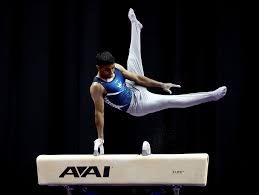
Rings
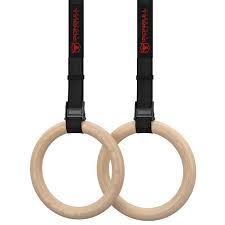
- This apparatus applies to men only. Two rings are suspended from a bar by a belt that is high enough for gymnasts to swing properly. One static move on the rings is a must however gymnasts perform more than one static move.
- The routine demonstrates the power and strength along with the ability to balance. Routine lasts about 90 seconds. Points are awarded based on complexity, stability, and landing skill of gymnast.
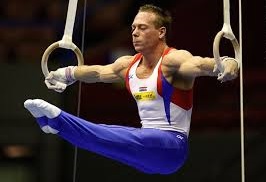
Parallel Bars
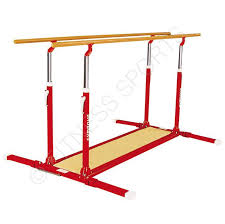
- This apparatus applies to men only. Here two parallel bars are separated by a distance that is more than the gymnast’s shoulder.
- The routine lasts about 90 seconds and gymnasts perform different swings and balances that require great strength and coordination across the parallel bars.
- Points are awarded based on complexity, stability, coordination and landing skill of gymnast.
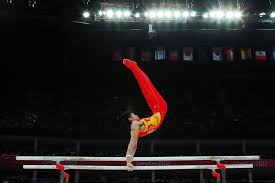
Horizontal Bar
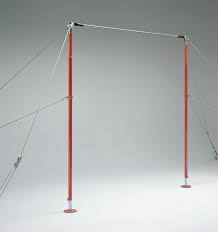
- This apparatus applies to men only. This is a steel bar about 2.9 m above the ground. Gymnasts are permitted to use leather grips to have a grip on the bar.
- The routine lasts about 90 seconds and involves swinging around the bar along with hand balance.
- Coach is allowed to lift the gymnast to the horizontal bars
- Routine ends with an acrobatic jump that is attained by gaining momentum during the swing.
- Points are awarded based on complexity, stability, and landing skill of gymnast.
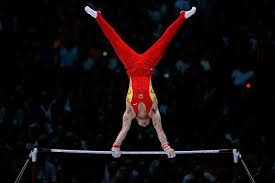
Uneven Bars
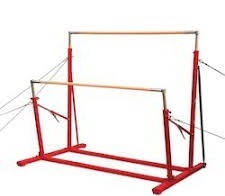
- This apparatus applies to women only. It is made of steel frame and the bars are made up of fibreglass with wood coating.
- There are two bars one slightly lower than the other. Unlike men’s horizontal bar, women gymnasts are not allowed to be lifted to the bars.
- Coach is allowed to catch the gymnast during fall and lift her back to the bar to complete her routine.
- Gymnast performs various swings and acrobats in their routine to display their flexibility and balance.
- In case gymnast had a fall, they must return in 30 sec.
- Routine is finished by an acrobatic jump. A routine lasts for about 70-90 sec.
- Points are awarded based on complexity, technique, stability and landing skill of gymnast.

Balance Beam
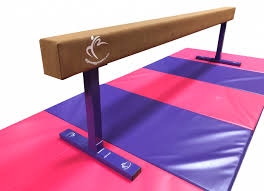
- This apparatus applies to women only. Gymnasts perform a routine full of somersaults, dancing movements, turns and other acrobats on a balance that is just 10 centimetres wide.
- Gymnasts perform either barefoot or by wearing a beam shoe.
- Routine start with a jump in springboard that is quickly taken away by the coach, no interference of coach is not allowed thereafter.
- In case of a fall, the gymnast is allowed to continue her routine within 10 seconds after the athlete is on her feet.
- Points are awarded based on complexity, technique, stability and landing skill of gymnast. Points are deducted for any errors that are committed by the gymnast.
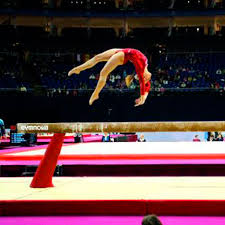
World Rankings
- World ranking based on apparatus :
- Vault Mens :
- Radivilov Igor

- Frasca Loris

- Shin Jeahwan

- Vault Womens :
- Simone Biles

- Jade Carey

- Ellie Downie

- Floor Mens :
- Zapata Rayderley

- Yulo Carlos Edriel

- Dolgopyat Artem

- Floor Womens :
- Simone Biles

- Sunisa Lee

- Angelina Melnikova

- Pommel Horse Mens :
- Lee Chih Kai

- Weng Hao

- Kameyama Kohei

- Rings Mens :
- Liu Yang

- You Hao

- Tulloch Courtney

- Parallel Bar Mens :
- Poliashov Vladislav

- You Hao

- Arican Ferhat

- Horizontal Bar Mens :
- Zonderland Epke

- Miyachi Hidetaka

- Srbic Tin

- Uneven Bar Womens :
- Nina Derwael

- Becky Downie

- Sunisa Lee

- Balance Beam Womens :
- Simone Biles

- Liu Tingting

- Li Shijia





 (1 votes, average: 5.00 out of 5)
(1 votes, average: 5.00 out of 5)


